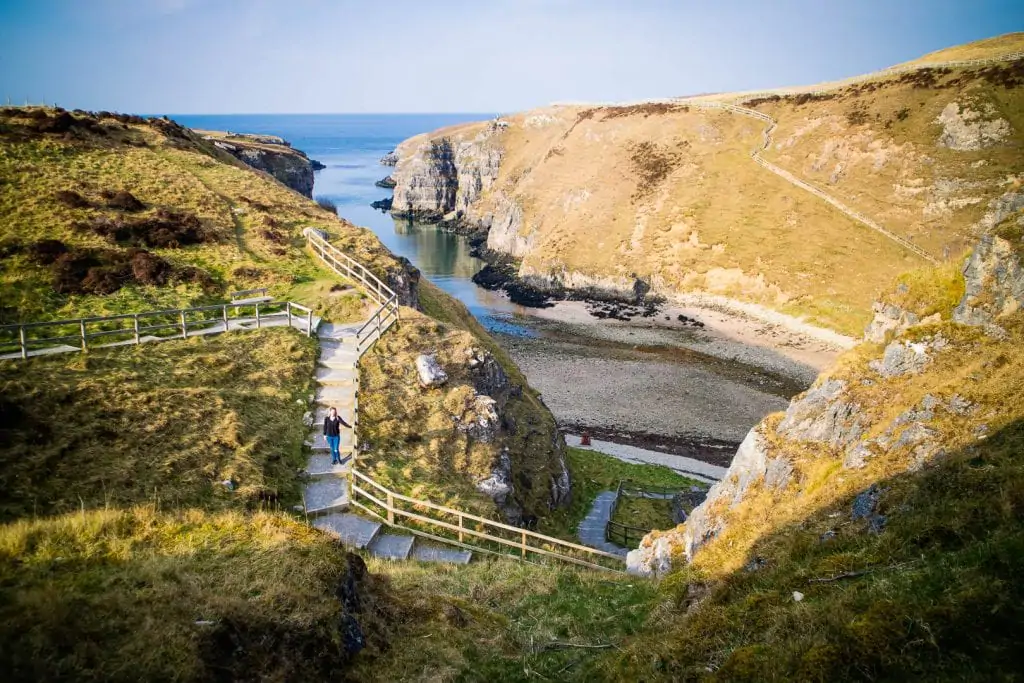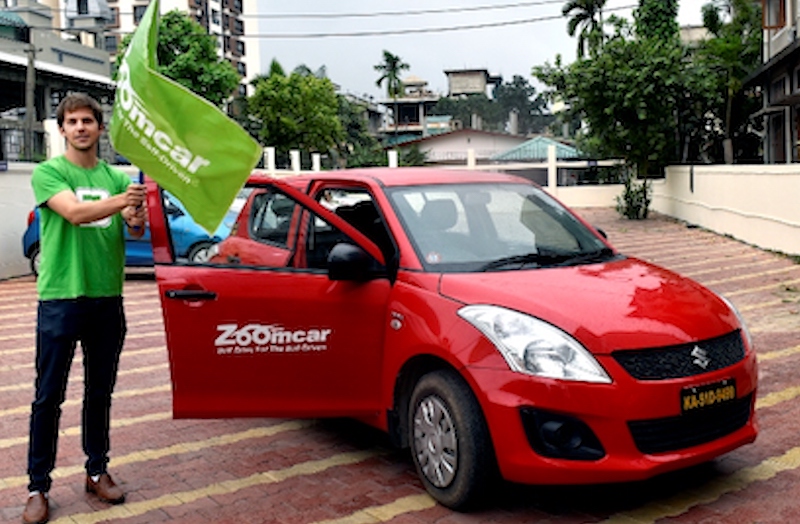The North Coast 500 is more than a scenic route — it’s a deep dive into the wild, mystical beauty of the Scottish Highlands. Launched in 2015 by the North Highland Initiative, this 516-mile (830 km) circular road trip starts and ends in Inverness, winding through coastal cliffs, misty mountains, ancient castles, and charming villages. It’s often described as Scotland’s Route 66, but many who’ve driven both say the NC500 offers even more variety and rugged beauty.
Whether you’re seeking dramatic landscapes, hidden beaches, rich history, or unforgettable local cuisine, this route delivers it all. From the mountain pass of Bealach na Bà to the windswept headlands of Dunnet Head, each day on the NC500 offers new and awe-inspiring moments. This guide will walk you through the most captivating highlights, tips, and everything you need to plan a successful journey through Scotland’s wild north.
What Is the North Coast 500 and Why Should You Drive It?
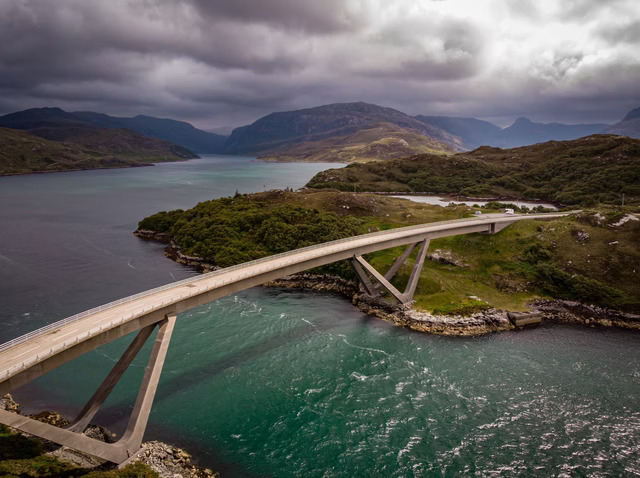
The North Coast 500 (NC500) is a scenic driving route that loops around the northernmost part of mainland Scotland. Created to showcase the Highlands’ lesser-known regions and boost rural tourism, the route has become one of the world’s top-rated road trips. Starting from Inverness, it can be driven clockwise or counterclockwise, passing through the regions of Wester Ross, Sutherland, Caithness, Easter Ross, and back to the capital of the Highlands.
The NC500 is ideal for travelers who crave a mix of outdoor adventure, remote escapes, and cultural immersion. Expect winding single-track roads, dramatic coastlines, and open moorlands teeming with deer, eagles, and seals. The route connects major landmarks like Smoo Cave, Dunrobin Castle, and John O’Groats, while giving you access to lesser-known beaches, lochs, and mountain trails.
You can complete the journey in 5 to 10 days depending on your pace, with accommodations ranging from luxury lodges to remote campsites. What sets the NC500 apart is its ability to give you both peace and thrill — often in the same hour.
Top Highlights Along the North Coast 500
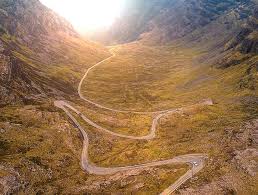
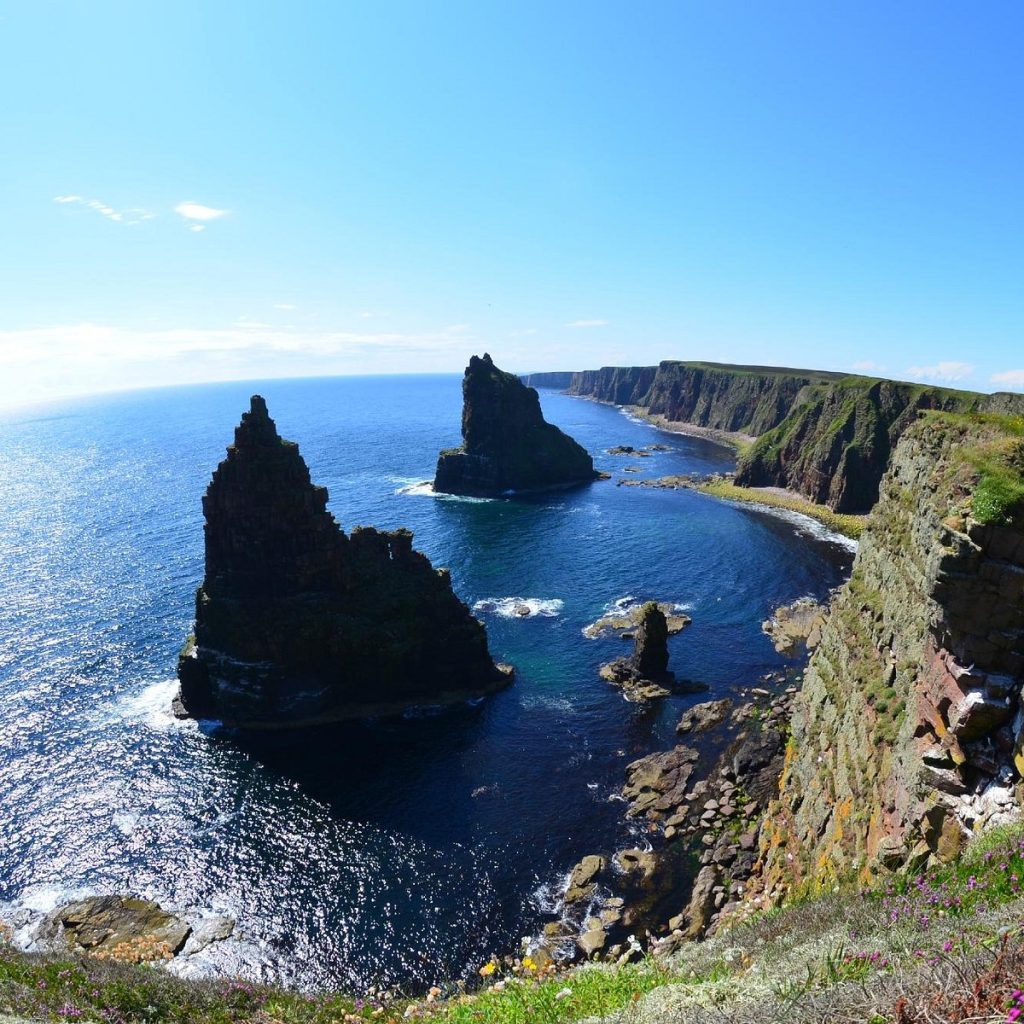
Bealach na Bà and Applecross Peninsula
One of the most dramatic drives in the UK, Bealach na Bà (Gaelic for “Pass of the Cattle”) is a twisting mountain road that rises to 2,053 feet. Built in 1822, it resembles Alpine roads and offers jaw-dropping views of Skye and the Hebrides on clear days. It’s not for the faint-hearted — with hairpin bends and no guardrails, it requires confident driving, especially in larger vehicles.
Descending into the Applecross Peninsula, you’re greeted by wide coastal views and a sense of timeless stillness. The village of Applecross is a charming stop, with a historic inn serving locally caught seafood and Highland fare. Many travelers choose to overnight here to soak in the serenity and remoteness of the area.
Driving this stretch early in the route sets the tone for the rest of your NC500 journey — untamed, unpredictable, and unforgettable.
Torridon and the Wester Ross Region
Torridon, in the region of Wester Ross, is a dream for photographers and outdoor lovers. The towering peaks of Liathach, Beinn Alligin, and Beinn Eighe rise dramatically from the shores of Loch Torridon, making the area one of Scotland’s premier hiking and climbing destinations. The scenery is raw and powerful, with ancient rock formations that are among the oldest in Europe.
The village of Shieldaig, tucked on the loch’s edge, makes a fantastic base. Here, travelers can kayak through crystal-clear waters, spot otters and seals, or simply relax in peace. The area is part of the North West Highlands Geopark, recognized by UNESCO for its unique geology.
This stretch of the NC500 offers a profound connection to nature. Even short walks provide cinematic views, and if you’re lucky, you might catch a glimpse of golden eagles soaring above the crags.
Smoo Cave and the Durness Coastline
As you reach Scotland’s northern edge, Smoo Cave is one of the route’s most awe-inspiring natural wonders. This vast sea cave near Durness features a 50-foot entrance — the largest in any sea cave in the UK. Inside, you’ll find a waterfall that crashes into an underground pool, and during summer, boat tours allow deeper exploration of its limestone chambers.
The village of Durness and its surroundings are strikingly beautiful. You’ll discover beaches like Balnakeil Bay, with its white sands and turquoise waters that rival Caribbean views — minus the crowds. Inland, Cape Wrath offers cliffside hikes and panoramic ocean views, accessible by ferry and minibus.
This remote part of the NC500 feels like the edge of the world. It’s quiet, wind-swept, and emotionally moving — a place to breathe deeply, slow down, and admire Scotland’s untouched coastline.
John O’Groats and Dunnet Head
Many travelers consider John O’Groats a bucket-list destination, and while it’s not technically the northernmost point of mainland Britain, it is the symbolic one. The John O’Groats signpost is a popular photo op and marks the end (or start) of the famous Land’s End to John O’Groats route.
However, for a more dramatic experience, head to Dunnet Head, which truly holds the northernmost title. With its towering cliffs, lighthouse, and abundant seabirds — including puffins in spring — Dunnet Head is a peaceful and wild location perfect for sunset viewing.
Nearby attractions include the Castle of Mey, a former royal residence restored by the Queen Mother, and the town of Thurso, a good spot for stocking up on supplies or taking a ferry to the Orkney Islands.
This segment blends rugged coastal views with cultural heritage, adding depth to the NC500 experience.
Dunrobin Castle and the East Coast Villages
The eastern stretch of the NC500 is gentler and more populated, but still brimming with charm. The showstopper here is Dunrobin Castle, a fairy-tale estate overlooking the sea near Golspie. With 189 rooms, French-inspired turrets, and stunning gardens, it resembles a Loire Valley château. Inside, you’ll find period furnishings, a private museum, and daily falconry displays.
The villages along this coast — Brora, Dornoch, and Tain — offer a warm Highland welcome. Enjoy local bakeries, whiskey distilleries like Glenmorangie, and traditional craft shops. Dornoch is also known for its cathedral and world-class golf course.
Although less dramatic than the west and north, the east coast lets you end your NC500 journey on a restful note, combining history, hospitality, and scenic coastlines.
Essential Tips for Driving the North Coast 500
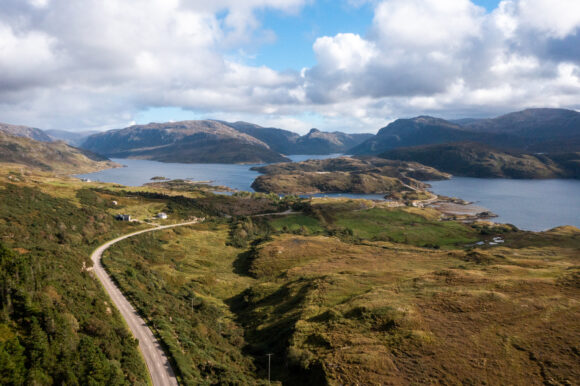
- Best Time to Visit: Late spring to early autumn (May–September) offers the best weather and longest daylight. July and August are busiest — for fewer crowds, try May or September.
- Accommodation: From five-star resorts to glamping pods and wild camping, book ahead — especially during summer. Many towns have limited availability.
- Fuel and Supplies: Fuel stations can be 50+ miles apart in remote areas, so don’t skip a refill. Also carry offline maps and mobile chargers, as reception may be weak.
- Driving Tips: Much of the NC500 consists of single-track roads. Use passing places properly and allow faster vehicles to pass. Watch for sheep and wildlife, especially at dawn and dusk.
- Sustainability: Respect local communities and the environment. Follow the Scottish Outdoor Access Code, dispose of waste responsibly, and avoid overcrowding sensitive areas.
Conclusion: A Journey Through Scotland’s Untamed Beauty
The North Coast 500 is more than a road trip — it’s a pilgrimage through the raw, dramatic, and soulful beauty of the Scottish Highlands. Every bend reveals a new wonder: secluded beaches, mist-covered mountains, ancient ruins, or simply silence so deep it humbles you. Whether you’re chasing adventure or serenity, this journey offers both in equal measure.
With careful planning, an open heart, and a curious spirit, the NC500 will gift you stories, photos, and memories that last a lifetime. Start your engine, roll down the windows, and let Scotland’s north coast show you its magic.

